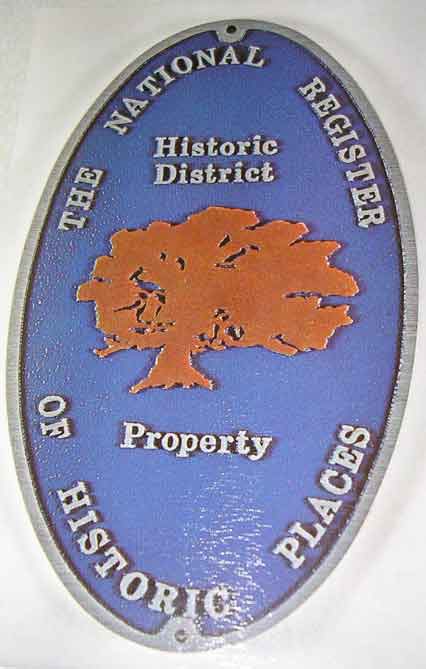|
|
||||||||||||
 |
 |
|
Wolcott Historical Society News - December 2008 By Florence Goodman In the last edition, I stated that my goal in this series of articles is to expound on the history of each of the existing historic structures found encompassing our town Green and the historic district. But first, it's important for you to understand what the National Register of Historic Places is all about and what places on and around the Green are part of the Wolcott Green Historic District. In October of 1986, Loether Associates, Historic Preservation Consultants began compiling an inventory of historic buildings and sites in our town. Its purpose was to provide the necessary documentation for listings on the National Register of Historic Places and was funded by the Small Cities Program of the Town of Wolcott under the terms of the Title I Housing and Community Development Act of 1974. In February of 2000, the State Historic Preservation Board evaluated the historical significance of the Wolcott Green and several of its surrounding properties and voted to approve it as a historic district, thus placing them on the National Register of Historic Places. The National Register of Historic Places falls under the jurisdiction of the United States Department of the Interior's National Park Services section. Placement on this register identifies the property as "historically significant and encourages the preservation of the property." It also makes owners of these properties eligible to apply for federal grants-in-aid (when available) for preservation activities and provides for protection from unreasonable destruction. The property may also be designated with a historical register marker. Placement on the register does not restrict the rights of the property owner in use, development, or sale of the property. Nor does it lead automatically to historic district zoning or force federal, state, local or private projects to be stopped. It does not guarantee that grant funds will be available or provide tax benefits to owners of residential historic properties, unless the properties are rental and treated as income-producing by IRS. It also does not put any restrictions on what the property owner can do with the property; it just designates the property as historically significant. There are some towns and cities in our state that have placed restrictions on historic properties, but Wolcott is not one of them. Our historic district consists of the Wolcott Green, Edgewood Cemetery, the Congregational Church and parsonage, the Center School which houses the Superintendent's office, the Grange Hall, the Town Hall and five houses that are on or near the Green. In the study completed by the Connecticut Historical Commission, it states, "Wolcott Green Historic District encompasses the historic institutional center of the Town of Wolcott. Situated on the broad crest of a hill, it consists of a cluster of historic buildings that generally face towards Wolcott Green, a small triangle of landscaped open space. The Green is bounded by principal roads in the district: Center Street (Route 322) on the north, a major thoroughfare; Boundline Road on the west; and Kenea Avenue and Farmingbury Road on the south." Most of the houses in the Historic District were built in the late 18th Century and are of Colonial/Federal style. Two of the houses face the Green and are located on Boundline Road; they are the Abijah Fenn Store Building owned by the King family and the David Bailey House owned by the Olsen family. The next house is located at the intersection of Kenea Avenue and Boundline Road and belongs to the Boyle family. This house is referred to as the Daniel Tuttle House. Next is the Darius Wiard House, which is found on the corner of Farmingbury Road and Kenea Avenue. This home belongs to the DeMarchena family. East of the Green, located on Center Street is the David Harrison House that is owned by the Wood family. Finally, diagonally across from the Harrison House, you will find the last of the five houses found in the historic district, the Bishop-Woodward House, also located on Center Street. Each of these structures played an important role in the development of our town Green and the history associated with it. In my next article, I will begin to address the history of each of them. (Much of the information for this article was taken from the "National Register of Historic Places Registration form," completed in 2000 and "The 1986 Historic Resources Inventory" by J.P. Loether.)
National Register of Historic Places Marker To view past installments of the Wolcott Historical Society News, click here. |
|
|
[Home]
[News]
[Purpose]
[Calendar]
[Museum]
[Membership]
[History]
[Contacts]
[Links]
All material at Wolcott Historical Society Web sites Copyright © 2000-2010 Wolcott Historical Society |
